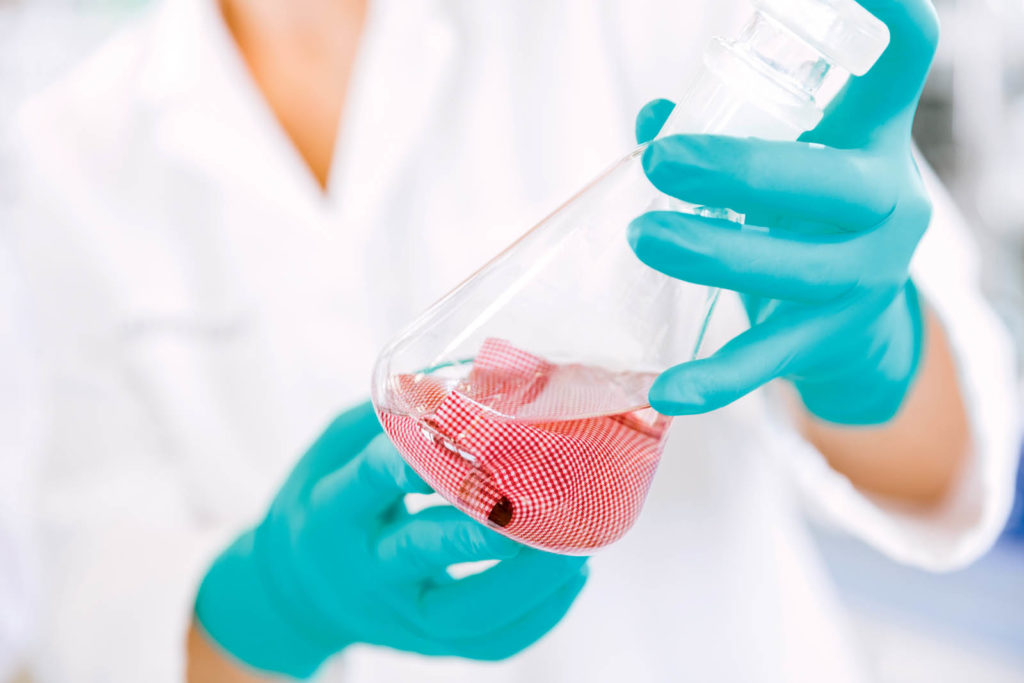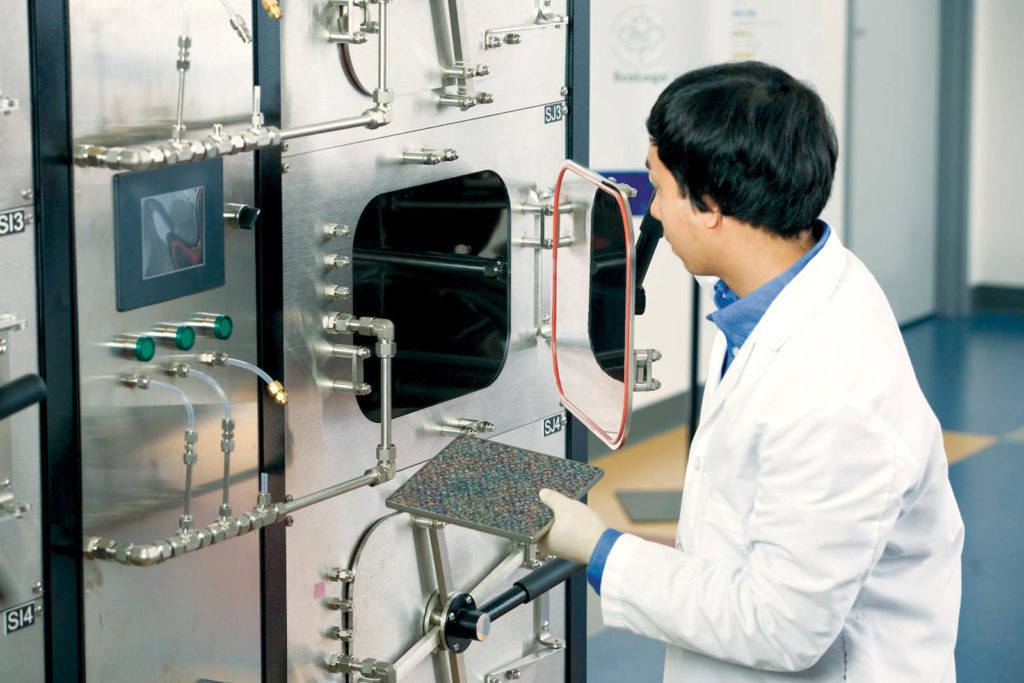
With sustainability increasingly on consumers’ minds, textile end product manufacturers (EPMs) are tasked with ensuring that the eco-friendly claims they make about their products and production processes are valid. This can prove challenging, as can staying on top of industry-changing regulations and standards, especially for EPMs that sell their products globally. But standards-development organizations and companies focused on testing and certification are available to provide guidance, informing EPMs and helping them to prevent missteps.
AATCC: Increasing textile knowledge
Founded in 1921 and headquartered in Research Triangle Park, N.C., the American Association of Textile Chemists and Colorists (AATCC) supports the sustainable textile industry by increasing textile knowledge, facilitating the exchange of knowledge and encouraging research, says Diana Wyman, executive vice president.
The organization offers publications, educational activities and networking opportunities, as well as standards development. Although AATCC doesn’t issue them, many of its test methods are essential components of certifications and labels.
The organization’s membership, comprised of individuals, corporations and students, reflects all areas of the global textile supply chain and includes fiber and chemistry suppliers; fabric manufacturers; EPMs; brands and retailers for apparel and home furnishings, industrial textiles and other products; and industry professionals coming from research institutions, testing labs, equipment manufacturers and other related organizations.
“One of the best things EPMs can do to support sustainability is producing products that last,” says Wyman. “Many AATCC standards are used to verify quality and durability of materials or products to avoid premature disposal.
“Analysis methods for fiber and chemicals ensure safe products and inform recycling efforts,” she continues. “Most recently, AATCC completed work on a test method to quantify fiber fragment (‘microfiber’) shedding in laundering.”
The new test method will provide EPMs with a reliable way to compare fabrics and make more sustainable choices, resulting in less pollution of aquatic environments, Wyman says. Other quality standards include AATCC TM150, used for measuring length and width changes in unseamed areas of garment samples subjected to home laundering, and AATCC TM130 for soil release, evaluating fabrics’ release of an oily soil after experiencing home laundering conditions.
“There are also numerous colorfastness test methods,” Wyman adds.
AATCC research committees and training sessions can assist EPMs in gaining a better understanding of regulations, standards and labeling, allowing them to learn about test methods and to question industry colleagues and AATCC staff.
Committee meetings give participants a way to stay ahead of trends and changes and to take part in discussions determining those changes, Wyman says. Held each spring and fall near the AATCC Technical Center, meetings generally take place in person but can be accessed remotely. Committees may also meet between these times at their discretion.
ASTM: Setting global standards
As a global standards development organization, ASTM International, headquartered in West Conshohocken, Pa., is focused on serving societal needs worldwide, says Nora Nimmerichter, manager, Technical Committee Operations, Committee D13 on Textiles. As of this writing, ASTM (formerly known as the American Society for Testing Materials) has developed 12,800 global standards in its 120 years in operation. The organization has 30,000 volunteer members comprised of researchers/technical experts, consumers, manufacturers, retailers and others, and counts more than 110 partner countries.
Committee D13 and its subcommittees develop standards around the characteristics, properties, terminology and use of textiles. Subcommittees that textile EPMs may find helpful include those on cotton fibers, wool and felt, textile sustainability, smart textiles, yarns and fibers, and labeling. ASTM also offers trainings and webinars to aid in understanding its standards for testing fabrics, apparel, household textiles, flammability issues and compliance.
Committees play an important role in standards development since the process for publishing a standard involves a voting system based on consensus from committee members. Membership is open to any person interested in participating in standards development.
“Consensus must be reached by a percentage of committee members who vote to affirm the standard,” Nimmerichter says. “Once the standard is approved by the committee, it’s published. Members work together to draft a standard, address concerns and continually make revisions.”
Hohenstein/OEKO-TEX: Testing, certification and research

Hohenstein Institute America is part of the Bönnigheim, Germany-based Hohenstein Group. For more than 75 years, the company has specialized in the testing, certification and research of textile products, says Ben Mead, managing director of Hohenstein Institute America. Hohenstein is also a founding member of the OEKO-TEX® Association.
OEKO-TEX offers a portfolio of standardized solutions and certifications enabling manufacturers to develop more sustainable products and processes, Mead says. Currently, 10,000 manufacturers, brands and retailers in nearly 100 countries are working with OEKO-TEX.
Developed through globally standardized, independent testing by partner institutes, testing is based on the OEKO-TEX criteria catalog, which is updated at least annually and incorporates “new scientific knowledge or statutory requirements.” Certifications of interest to textile EPMs include five specific standards by the association.
1. STANDARD 100 by OEKO-TEX is for raw, semi-finished and finished textile products and their accessories at all processing levels. “If a textile product carries [this] label, every component of that article—i.e., every material, thread, button and other accessory—must be tested for harmful substances,” Mead says. “Testing for harmful substances with STANDARD 100 incorporates legal regulations, numerous chemicals that pose a health risk (including some not yet legally regulated) and a wide variety of health parameters.”
2. LEATHER STANDARD by OEKO-TEX is for leather and leather goods and accessories at all production stages.
3. ECO PASSPORT by OEKO-TEX addresses the chemicals, colorants and auxiliaries used in the textile and leather industries. A multistep process analyzes whether each ingredient in the chemical process meets specific safety and sustainability requirements and regulatory compliance.
4. STeP by OEKO-TEX is the acronym used for Sustainable Textile (and leather) Production, a modular certification system for textile and leather production facilities intended to implement and promote eco-friendly, safer and socially responsible production processes.
5. MADE IN GREEN by OEKO-TEX is a traceable label that can be awarded at any production stage to any textile or leather product. It certifies that products have been tested in accordance with STANDARD 100 or LEATHER STANDARD and produced in accordance with STeP certification.
“In addition to testing that occurs during annual certification and renewals, we conduct extra control testing on products pulled from downstream products, production runs during audits and retail shelves,” says Mead. “We’ve also helped create methods and standards for GMO screening, identification and quantification, microfiber analysis beyond shedding mass and biodegradability assessments to measure decay behavior and soil impact.”
UL/GREENGUARD: Improving indoor air quality

Headquartered in Northbrook, Ill., UL has delivered testing, inspection and certification training, as well as advisory services, risk-management solutions and business insights to customers in more than 100 countries since 1894. In 2011, UL began offering the GREENGUARD certification program, designed to identify products “meeting stringent criteria for chemical emissions in indoor environments,” says Scott Laughlin, product manager, UL Retail and Consumer Products.
The certification applies to a range of items, including building materials, furniture, electronics and cleaning products. The GREENGUARD certification is “referenced or preferred by more than 450 federal purchasers, retailers, green-building rating tools and building codes” worldwide, according to the company.
GREENGUARD is concerned with chemical exposure resulting from various products and their effect on indoor air quality. For textile EPMs, this could include upholstery, window treatments, divider panels and carpets.
“We measure chemicals that a textile user might inhale when exposed to the product,” Laughlin explains. “During the certification process, we seek to understand how the product is manufactured and brought to market—focusing on things like the product’s chemical makeup and the inventory time before shipment. We also may take screening samples of products from the potential certification scope.
“Then, we group products together in a textile testing group according to their materials and/or usage,” Laughlin continues. “For example, wall covering textiles have a much higher surface area in an office than shade fabrics. We seek out the worst-case scenario products for each testing group and test them in our environmental chambers for a minimum of seven days and up to 14 days.”
Manufacturers are provided with data on individual chemical levels, listed by concentration, helping them understand the emissions coming from a specific product and how these change over time. Certification is ongoing with representative products tested annually.
Laughlin advises EPMs to verify that the sustainability claims attached to the textiles they’re working with are accurate by asking for proof from validated test reports or certifications, or for “an attestation” from the supplier.
“These types of disclosures will be necessary for most certifications the EPM may go for, and up-to-date information is key,” he says. “So, ask for this information on an ongoing basis.”
Pamela Mills-Senn is a writer based in Seal Beach, Calif.
SIDEBAR: Looking for details?
AATCC | www.aatcc.org
A list of new and revised standards is available online, as are all projects the various committees are pursuing. AATCC publishes a new volume of its Manual of International Test Methods and Procedures annually, with a mid-year supplement in July.
ASTM | www.astm.org
Available to members and nonmembers, the Standards Tracker® is a free alert emailed each Monday and Thursday that lists new and revised standards and standards development activity. Nonmembers may also access committee activity via the Committee D13 on Textiles at https://www.astm.org/COMMITTEE/D13.htm.
Hohenstein/OEKO-TEX | www.oeko-tex.com
The OEKO-TEX® standards are available on the organization’s website at no cost. There are also free and accessible tools that enable EPMs to check certificate claims and verify their validity.
UL/GREENGUARD | www.ul.com
The website details various GREENGUARD certifications and standards, as well as other information of interest to textile EPMs.
 TEXTILES.ORG
TEXTILES.ORG


